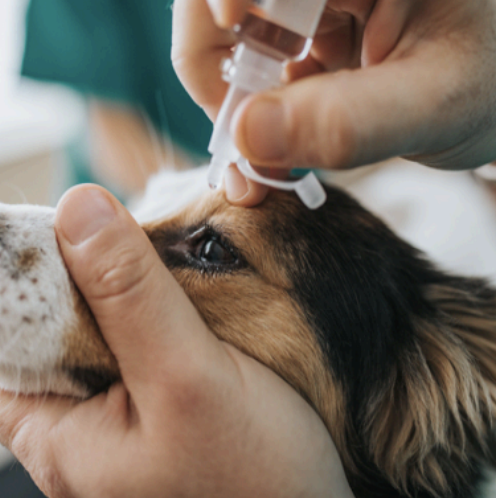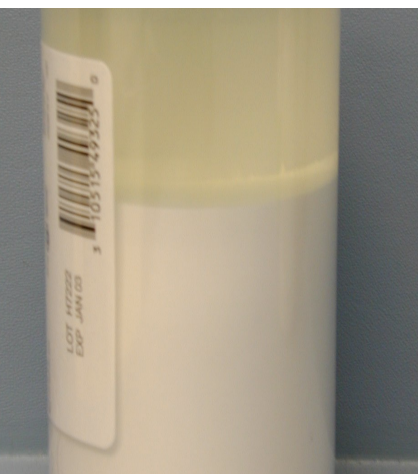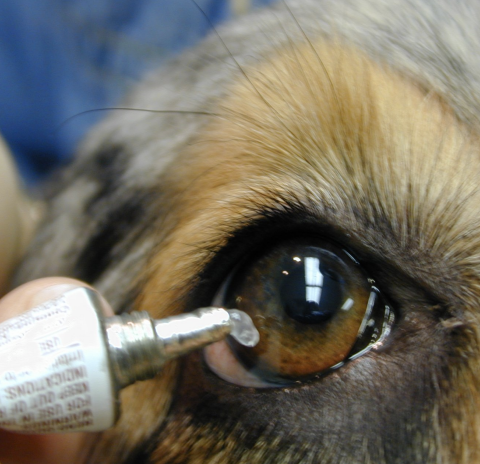Ocular Drugs - 1
1/23
There's no tags or description
Looks like no tags are added yet.
Name | Mastery | Learn | Test | Matching | Spaced |
|---|
No study sessions yet.
24 Terms
Lipid soluble, protein binding, molecular size
What three characteristics of ocular drugs are important in allowing the drug to pass through the different barriers of the eye?
Interspecies
Blinking, third eyelids, tear flow, aqueous production, and corneal and scleral thickness are all what type of differences to consider when giving ocular drugs?
Topical
Dissolution of the drug in the tear film, tear flow, tear drainage, time the drug stays on the conjunctival fornix and cornea, and binding to proteins/metabolism, and diffusion through the cornea and conjunctiva are all important factors to consider when giving ocular drugs through what route?
Solution
What method of administering ocular drugs has less effect on vision, less incidence of contact dermatitis, less toxicity to ocular structures, and ease of application? It has a short contact time, dilution effects, are expensive, and have increased systemic absorption compared to other routes. One drop on the eye is usually enough for treatment.

Suspensions
What method of administering ocular drugs depends on the size of the particles? Larger ones will be hindered as there is relatively small surface area and lower availability, while smaller ones will have higher availability but more rapid elution from the ocular surface.

Ointment
What method of administering ocular drugs have a longer contact time, less dilution, protect the cornea from drying, and are less expensive? They are difficult to dose precisely, increase ocular discharge, are more difficult to administer, have more cases of contact dermatitis, may delay epithelial wound healing, and have relatively poor availability. A 5mm ribbon of the drug on the eye is usually enough for treatment.

Yes
Should non-infectious causes of eye infection be ruled out before applying drugs?
Triple antibiotic ointment
What ocular drug is a broad spectrum combination indicated for conjunctivitis, endophthalmitis, and keratitis, as well as ocular surface inflammation and secondary bacterial infection? It contains bacitracin/gramicidin, polymyxin B, and neomycin/polymyxin B dexamethasone.
Aminoglycosides
What group of drugs containing gentamicin, tobramycin, and neomycin can be used in combinations for treat ment of ocular infections? They are indicated for blepharitis, conjunctivitis, corneal ulcers, and keratitis.
Gentamicin
Which aminoglycoside may cause decreased wound healing when given as an ocular drug?
Tobramycin
Which aminoglycoside is indicated for Pseudomonas, in addition to the other indications of this group?
Oxytetracycline
Which ocular drug is a broad spectrum antibiotic indicated for conjunctivitis, corneal ulcers, infectious feline conjunctivitis, and infectious keratoconjunctivitis in cattle? Increased corneal epithelial wound healing is seen.
Doxycycline
Oral administration of what tetracycline is used to treat Chlamydofila felis, an ocular infection?
Fluoroquinolones
Which drug group, containing ciprofloxacin, gatifloxacin, levofloxacin, moxifloxacin, and ofloxacin, are given to treat ocular infections only after doing a culture and sensitivity test? They are indicated for conjunctivitis, keratitis, and aminoglycoside resistant pseudomonas, as well as ocular surface and intraocular infections.
Chloramphenicol
Which ocular drug is a broad spectrum antibiotic indicated for conjunctivitis, keratitis, mycoplasma, and Chlamydofila? It is less infective against Pseudomonas and other gram-negative bacteria, but penetrates the intact cornea.
Polyene
Which group of drugs includes natamycin and amphotericin B, is given through the subconjunctival route, is indicated for confirmed ulcerative keratomycosis, and can cause local irritiation?
Subconjunctival
Through what route are polyenes given ocularly?
Local irritiation
What is the main adverse effect of polyenes when given ocularly? Azoles also cause this, only minimally.
Azoles
Which group of drugs include some given topically and some given orally, are indicated for ulcerative and non-ulcerative keratomycosis, and may cause minimal local irritation?
Topical
Through what route are the azoles: voriconazole, miconazole, and itraconazole given to treat ocular infections?
Oral
Through what route are the azoles: ketoconazole and fluconazole given to treat ocular infections?
Feline herpesvirus-1
What virus is essentially the only one treated with ocular drugs?
Topical
Through what route are the antivirals trifluridine, idoxuridine, vidarabine, and cidofovir given to treat feline herpes? Ocular irritation can occur with this route.
Famciclovir
What antiviral is given orally to treat feline herpesvirus infection of the eye?